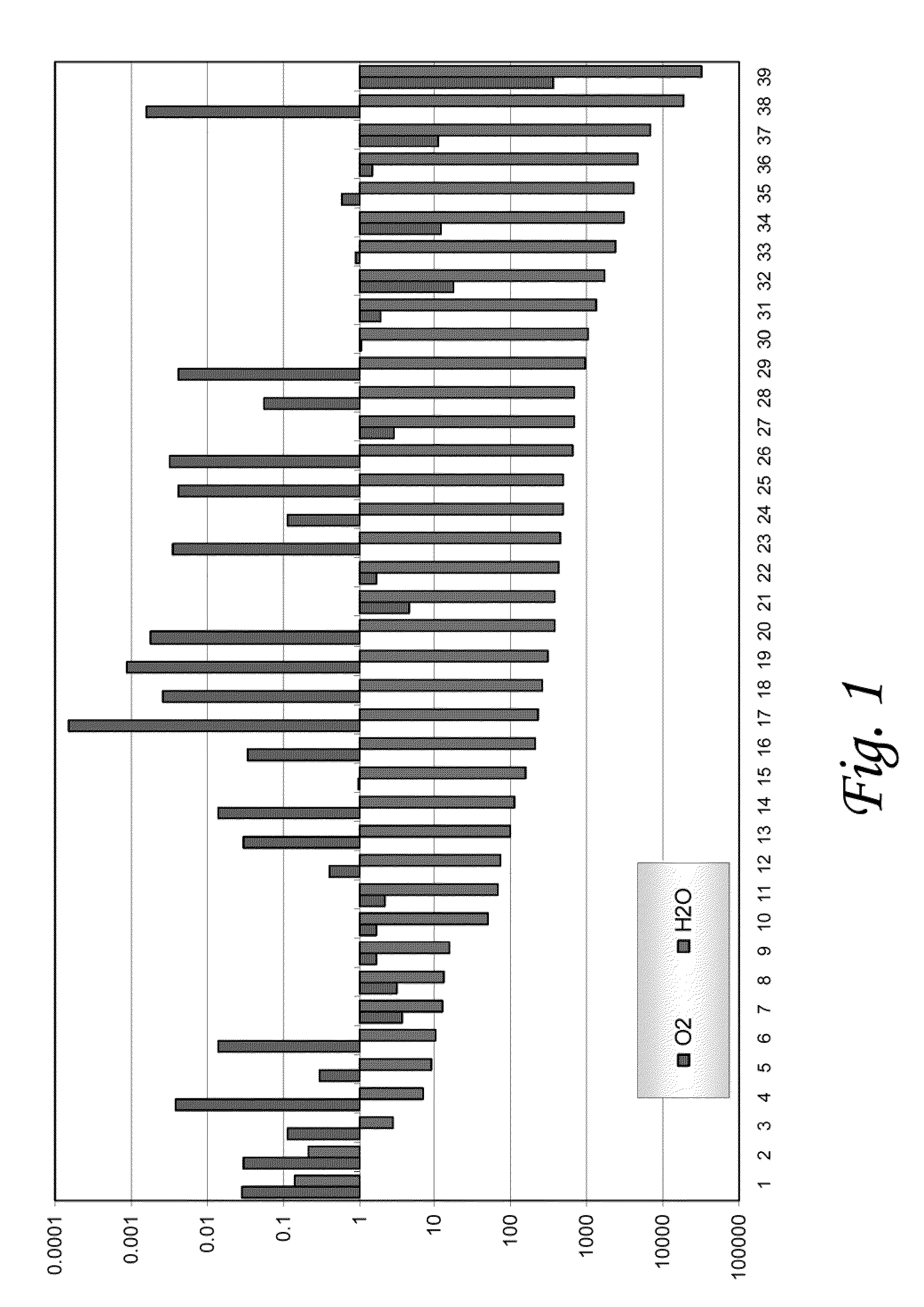Thermal interface materials with good reliability
a technology of thermal interface materials and reliability, applied in the direction of semiconductor/solid-state device details, lighting and heating apparatus, manufacturing tools, etc., can solve the problems of high thermal resistance at the interface, impairing the transfer of heat away from the semiconductor device, and generating heat from the device promptly and adequately removed, etc., to achieve good reliability
- Summary
- Abstract
- Description
- Claims
- Application Information
AI Technical Summary
Benefits of technology
Problems solved by technology
Method used
Image
Examples
example 1
Thermal Measurement and Reliability Test
[0037]Thermal resistance measurements of the materials are carried out on a thermal test vehicle (TTV) which simulates the CPU heat dissipation structures. The CPU is a silicon chip embedded with heating elements and temperature probes. Between the silicon wafer and the heat sink is one layer of thermal interface material of initial 4 mil thickness, the setup is secured with 65 psi pressure with screw tight.
[0038]The reliability test is normally conducted by putting the sample, which is mounted, in the TTV test device in an oven at a given temperature, or in a humidity chamber or temperature cycling chamber.
example 2
Materials and Sample Preparation
[0039]One example for the preparation of sample 1 is as follows: 100 g of hydrogenated olefin, which presents a low permeability to water is mixed with 60 g poly(imino-1-oxaundecamethylene) nylon 6 and 20 g of polytetrafluorethylene powder, which present low permeability to oxygen. To ensure homogenous mixing, heating may also be applied. To the above mixture 5 g of antioxidant is added, such as Ethanox 310, and a thixotropic agent such as Thixatrol Plus is also added. The filler materials for the thermal paste used are indium tin powders, which can account for as much as 85% of the weight of the paste.
[0040]As a comparison, sample 2 uses only polyol ester such as Hatcol 5150 as a suspension liquid to disperse the same metal filler.
[0041]Sample 3 is the commercially available thermal paste materials of Arctic Silver 5.
example 3
Materials Performance—Thermal Acing
[0042]Thermal aging experiments are conducted and the test results are shown in Table 3. It is shown that the sample 1 is much more stable than samples 2 and 3.
TABLE 3Aged at 90° C.Thermal resistance (cm2 K / W)(hours)Sample 1Sample 2Sample 300.1400.1420.1505000.1430.1870.20110000.1450.2100.252
PUM
| Property | Measurement | Unit |
|---|---|---|
| Volume | aaaaa | aaaaa |
| Volume | aaaaa | aaaaa |
| Temperature | aaaaa | aaaaa |
Abstract
Description
Claims
Application Information
 Login to View More
Login to View More - R&D
- Intellectual Property
- Life Sciences
- Materials
- Tech Scout
- Unparalleled Data Quality
- Higher Quality Content
- 60% Fewer Hallucinations
Browse by: Latest US Patents, China's latest patents, Technical Efficacy Thesaurus, Application Domain, Technology Topic, Popular Technical Reports.
© 2025 PatSnap. All rights reserved.Legal|Privacy policy|Modern Slavery Act Transparency Statement|Sitemap|About US| Contact US: help@patsnap.com



